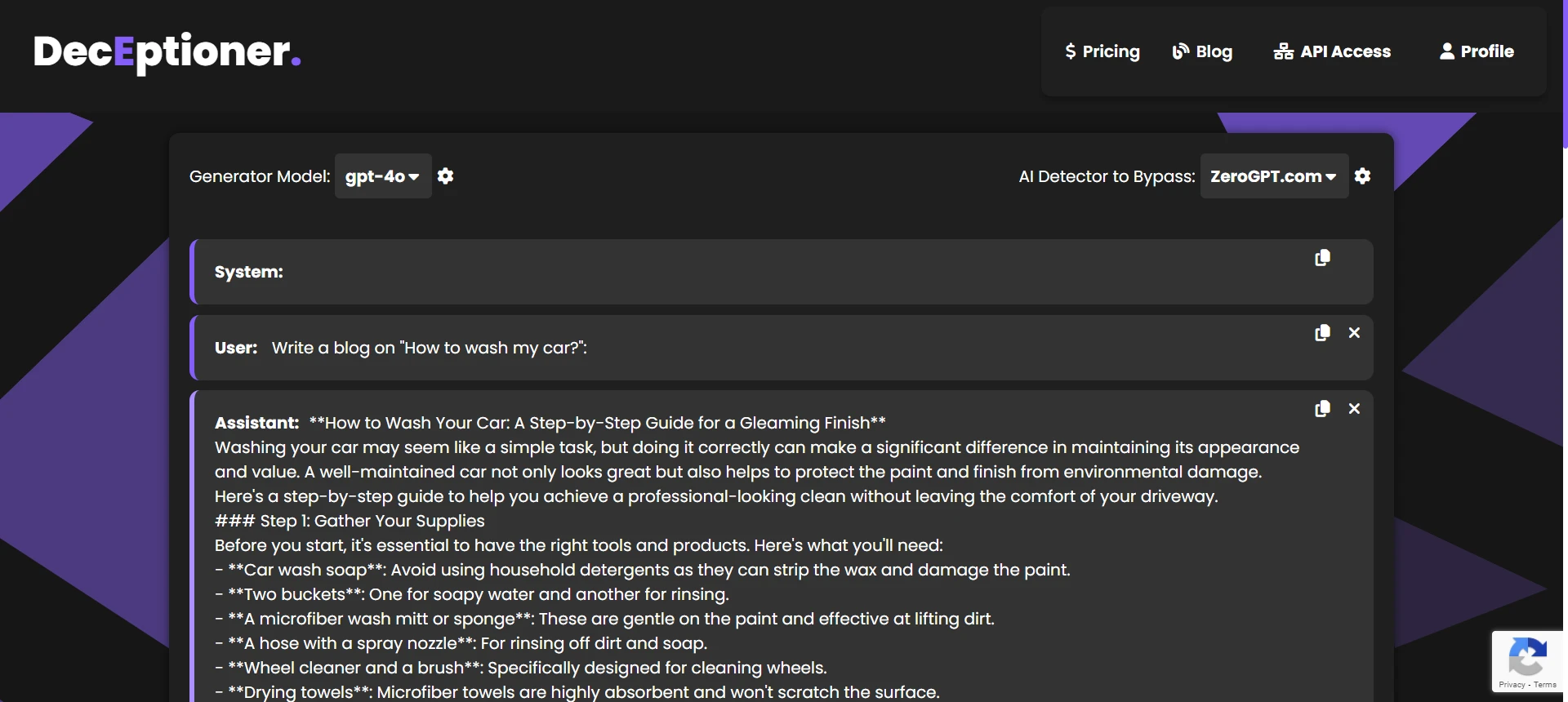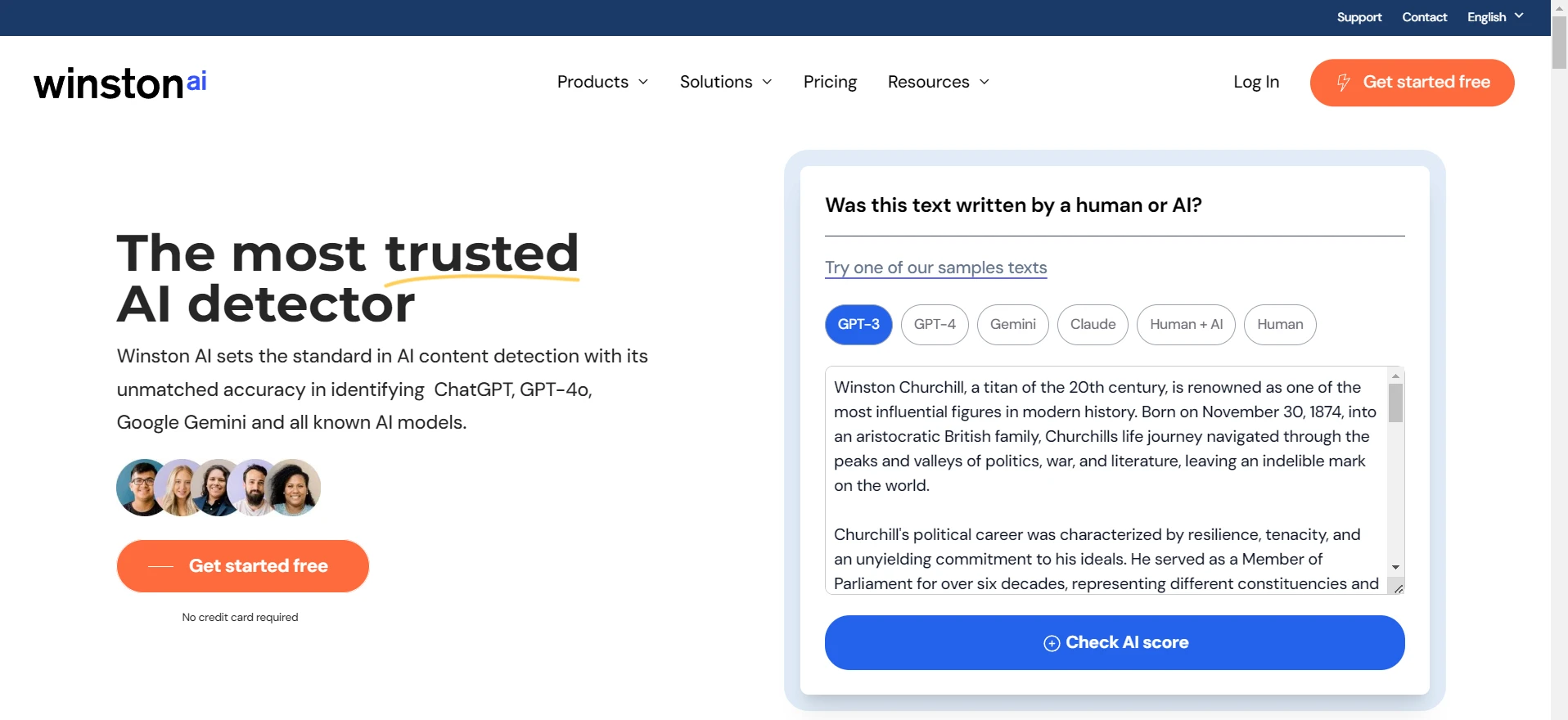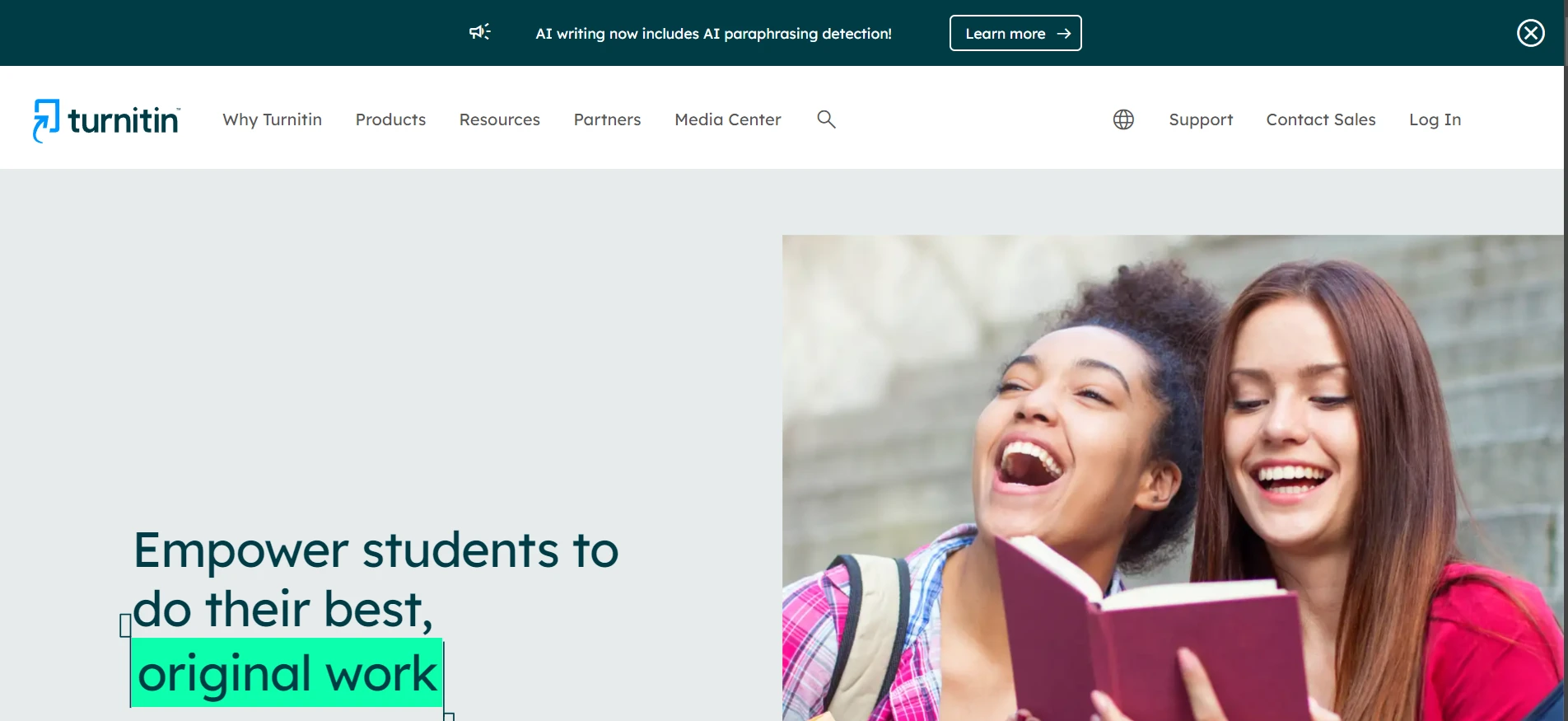As we all know, Turnitin sits in a lot of classrooms and faculty dashboards, so people naturally ask: is Winston AI accurate like Turnitin? The short answer is NO on our dataset. The longer answer is the devil lies in the details. Keep reading to know more about it.
Short answer
On this dataset (Winston AI dataset, Turnitin AI dataset), Turnitin is notably more accurate than Winston AI at distinguishing AI-written from human-written text. Turnitin shows higher AUCs and higher overall accuracy with far fewer false positives (mislabeling humans as AI). Winston AI catches slightly more AI texts but at the cost of many more false accusations.
Also Read: Winston AI vs. Turnitin
Note on score direction (important for readers)
- Turnitin: higher score ⇒ more AI-like (0 = Human).
- Winston AI: higher score ⇒ more Human-like (0 = AI-written).
For the analysis, we converted both into an AI-likeness probability so we can compare apples to apples.
What the numbers say (Positive class = AI-written)?
Turnitin
- ROC-AUC: 0.874
- PR-AUC: 0.928
- Best-F1 operating point: threshold ≈ 0.071 (AI-prob), F1 = 0.840
- Accuracy @ best-F1: 0.850; Balanced Accuracy: 0.852
- Confusion (best-F1): TN=73, FP=5, FN=19, TP=63 (n=160)
Winston AI
- ROC-AUC: 0.792
- PR-AUC: 0.747
- Best-F1 operating point: threshold ≈ 0.013 (AI-prob), F1 = 0.760
- Accuracy @ best-F1: 0.731; Balanced Accuracy: 0.729
- Confusion (best-F1): TN=49, FP=29, FN=14, TP=68 (n=160)
Interpretation
- Turnitin’s curves and metrics indicate stronger overall separability between human and AI texts.
- Winston AI is more aggressive (very low threshold to flag AI), which reduces false negatives but spikes false positives. In academic settings, this is risky.
Why this matters in plain language?
False positives are when the detector says a human-wrote text is AI. False negatives are the opposite, when an AI text slips through as human. If you’re a student or an instructor, false positives hurt the most—because an innocent writer gets flagged. Winston AI’s settings (at its best-F1 point) trade fewer misses of AI for a lot more false accusations of humans. Turnitin, on this dataset, makes far fewer such accusations while still catching plenty of AI.
Key statistical terms explained
- ROC-AUC: “Ranking skill” — probability the detector assigns a higher AI-likeness score to an AI text than a human one. (0.5 = coin flip, 1.0 = perfect)
- PR-AUC: Focuses on flagged AI texts. Balances precision (few false accusations) and recall (catching AI texts).
- Threshold and operating point: Score cutoff to decide AI vs human. Lower threshold ⇒ more flags ⇒ higher recall but more false positives.
- Precision: Of texts labeled AI, what fraction actually are AI. High = fewer false accusations.
- Recall: Of all AI texts, what fraction did we catch. High = fewer misses.
- F1 score: Harmonic mean of precision and recall. Balances both.
- Accuracy: Fraction of all predictions correct.
- Balanced Accuracy: Average of recall on AI and on human classes. Shows bias.
- Confusion matrix:
- TP: AI text correctly flagged as AI.
- FP: Human text incorrectly flagged as AI.
- TN: Human text correctly called human.
- FN: AI text missed and called human.
Methods
We scored the same set of 160 texts with both detectors. For Turnitin, we used the “AI Score” (0 = Human, 100 = AI) and normalized it to a 0–1 AI-likeness probability. For Winston AI, we used its “Score” (0 = AI-written, 100 = Human-like), normalized to 0–1 and inverted. We computed ROC-AUC, PR-AUC, and the best-F1 operating point, reporting accuracy, balanced accuracy, and the confusion matrix at that point. Box plots compare score distributions by ground-truth class.
Data hygiene note
Winston’s “Score” mixes decimals (0–1) and percents (0–100). We normalized row-by-row: values >1 were divided by 100; values ≤1 were treated as already fractional.
So, let’s tie it together with one useful opinion
If your goal is to minimize false accusations of human writing as AI, Turnitin is safer on this sample. If you’re willing to tolerate more false positives to catch a few more AI texts, Winston AI can be more sensitive—but the tradeoff is steep here. On balance, Winston AI is not as accurate as Turnitin on this dataset.
Who should care and why
- Instructors and admins: Higher false-positive rate means more appeals, more admin time, and innocent students pulled into conduct workflows.
- Students: You want systems that don’t over-flag; balanced detectors protect you more.
- Tool evaluators: ROC-AUC shows general ranking skill, but PR-AUC and confusion numbers at your chosen threshold show real-world impact.
Frequently Asked Questions
Q1. Is Winston AI accurate like Turnitin?
No. On our 160-text dataset, Turnitin beats Winston AI on ROC-AUC (0.874 vs 0.792), PR-AUC (0.928 vs 0.747), accuracy (0.850 vs 0.731), and balanced accuracy (0.852 vs 0.729), with far fewer false positives.
Q2. Why are false positives such a big deal?
Because a false positive means a human-written text gets called AI. This leads to unnecessary investigations and lost trust. In academic settings this is not just numbers, it’s people.
Q3. Can thresholds be tuned to fix this?
You can tune thresholds, yes, but it’s always a trade. A model with stronger underlying separability (higher AUCs) gives you better options across the whole curve, which is what Turnitin shows here.
Q4. Does this prove Turnitin is always better?
No, it shows “on this dataset” with this scoring and normalization. Datasets vary. But the gap here is large enough that the pattern is unlikely to be random noise. Detectors do evolve over time.
The Bottom Line
Turnitin shows stronger separation and better balance between catching AI and not accusing humans, while Winston AI looks more aggressive and trigger-happy at its best-F1 point on this data. If you have to pick one to minimize harm from false accusations, pick the safer one here—Turnitin.

![[HOT TAKE] Is Winston AI accurate like Turnitin?](/static/images/is-winston-ai-accurate-like-turnitinpng.webp)
![[STUDY] Can Phrasly AI Humanizer Bypass ZeroGPT?](/static/images/can-phrasly-ai-humanizer-bypass-zerogptpng.webp)
![[STUDY] Can Phrasly AI Bypass Turnitin?](/static/images/can-phrasly-ai-bypass-turnitinpng.webp)
![[HOT TAKE] Is Winston AI or GPTZero more accurate?](/static/images/is-winston-ai-or-gptzero-more-accuratepng.webp)
![[NO NONSENSE ANSWER] Is Turndetect Permanently Down?](/static/images/is-turndetect-downpng.webp)





